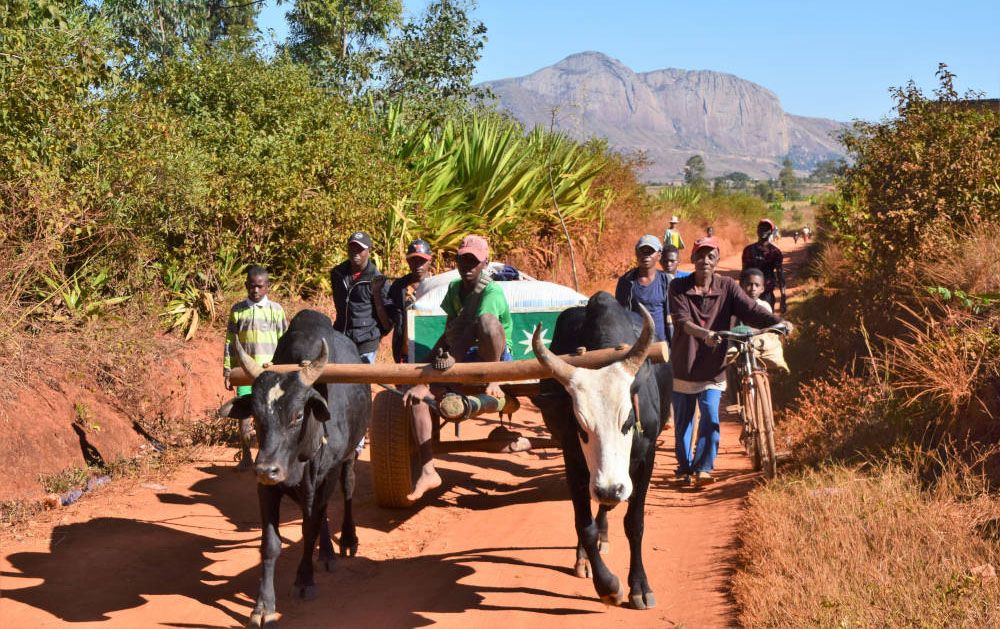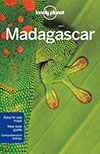Tribal visits in the surroundings of Ambalavao
Tribal visits in the surroundings of Ambalavao
Ambalavao is a nice town located on the RN 7 on the way south. The most famous thing is the village because of the weekly zebu market on Wednesday. For us, the reason for a visit to Ambalavao was an introduction to the Betsileo tribe. This population group is very common in the region.
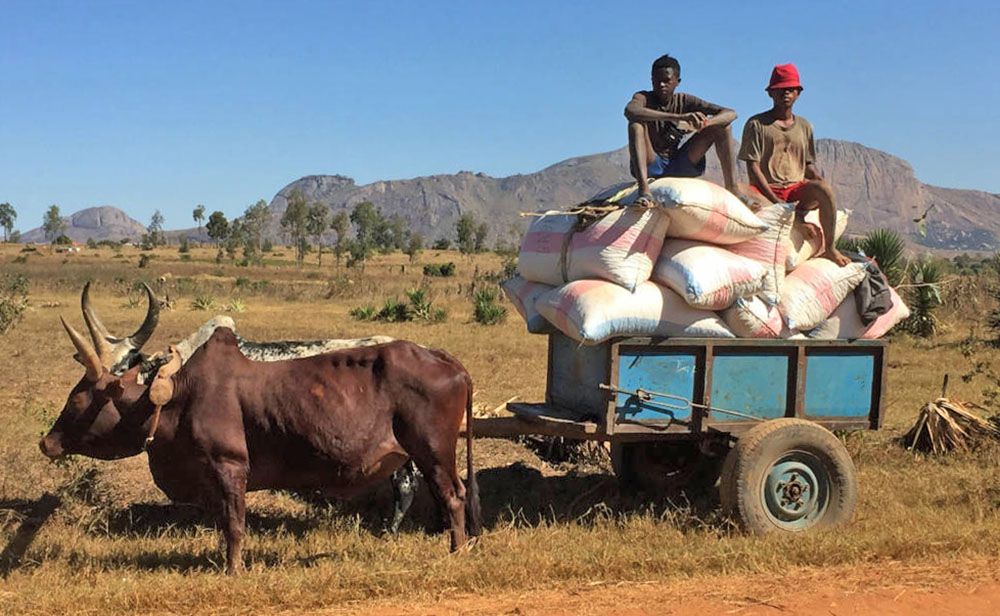
Betsileo, the “invisible”
The Betsileo make up about 12% of Madagascar’s total population. The name means “the invisible” in Malagasy. How they got this name is unfortunately unknown to us, our guide couldn’t explain it either. They live mainly on the central highlands of the country and consider Fianarantsoa as their capital.
Many Betsileo are farmers. Growing rice is their main activity. The whole family is involved. On our walk through the surroundings of Ambalavao we saw that a little boy was “taught” how to operate the plough, which was pulled by two zebus.
In the vicinity of Ambalavao there are small hamlets where Betsileo families live. They usually consist of a few houses that they build themselves. Most of them are made of loam and zebu manure, reinforced on the sides with stones. Some of them have a fully masonry house of stones. During our walk through the surroundings of Ambalavao we saw a whole family making bricks near a river. Mud mixed with zebu manure was poured into a mould. Then they had to harden and the dried stones were baked over a fire. In total it would take weeks before the family had enough stones to build their house.
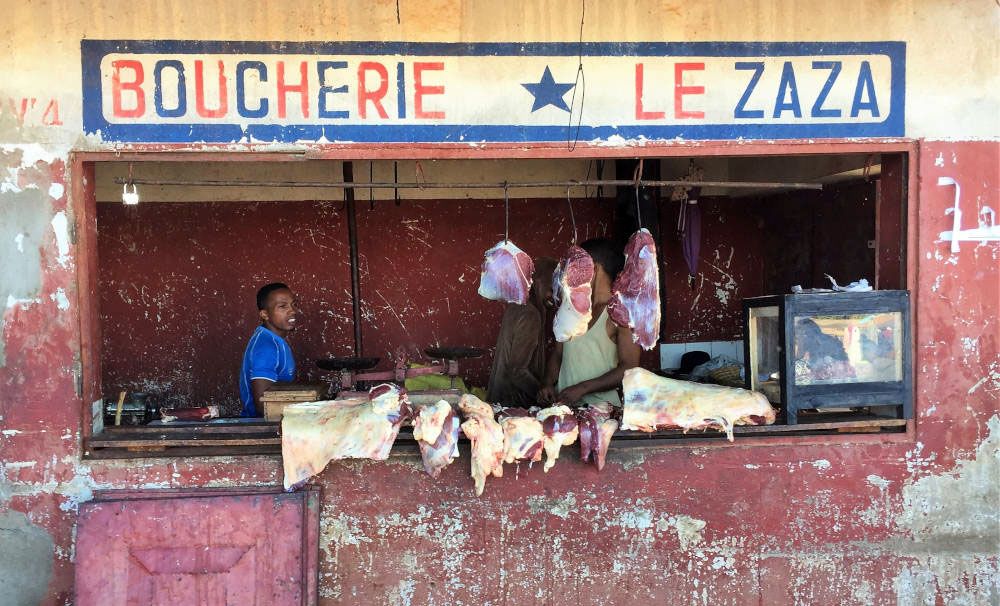
Wonderful walk through the surroundings of Ambalavao
To get more acquainted with the beautiful surroundings around this place and to be able to see the customs of the Betsileo tribe, we walked around with a guide for a day. Our guide Gégé was from Alefa Tours in Ambalavao. He knows a lot about the region and the Betsileo and he is a nice man who speaks excellent English. An absolute must to go on such a walk with him. We had booked him through our hotel. He doesn’t have a website, but he does have an e-mail address: tovomario@gmail.com.
The market of Ambalavao was our first destination. Markets are very important to Betsileo. Here they try to sell their agricultural products. Additionally, they buy the food they don’t grow themselves, their clothes and utensils. Many children were very enthusiastic and wanted to be photographed with us. They love it when you show them the photos afterwards. They marvel at the fact that they are looking at themselves.
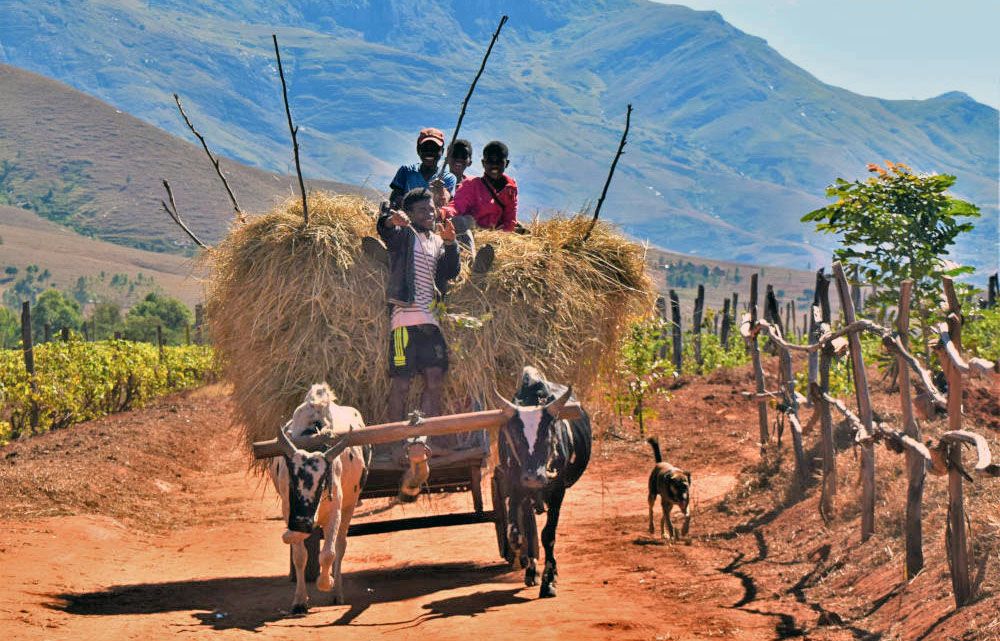
Red-coloured paths
After the village we quickly hit the red-coloured dirt roads. It’s unbelievable what’s passing by on these paths. Of course, a lot of people on foot. The women carry things on their heads, men we hardly ever saw doing that. They carry all kinds of things on rickety bikes, sometimes very heavy loads through the loose gravel. People often walk next to the bike because it is just too difficult to cycle here. Of course, many wooden carts pass by, pulled by zebus. Some very high loaded with dried grass, on which a family sits. Everyone waves at us enthusiastically or calls to us. Children like to walk with us for a while, and then grab our hands along the way.
We took this walk on a Saturday. For many Betsileo, this is a church day. We regularly passed beautifully dressed families on our way to a church in Ambalavao. Too bad that there is so much dust on their beautiful clothes when they have to walk this path.
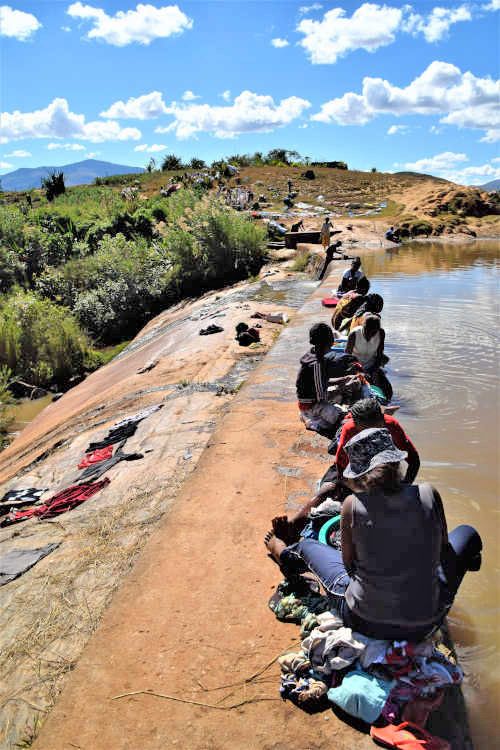
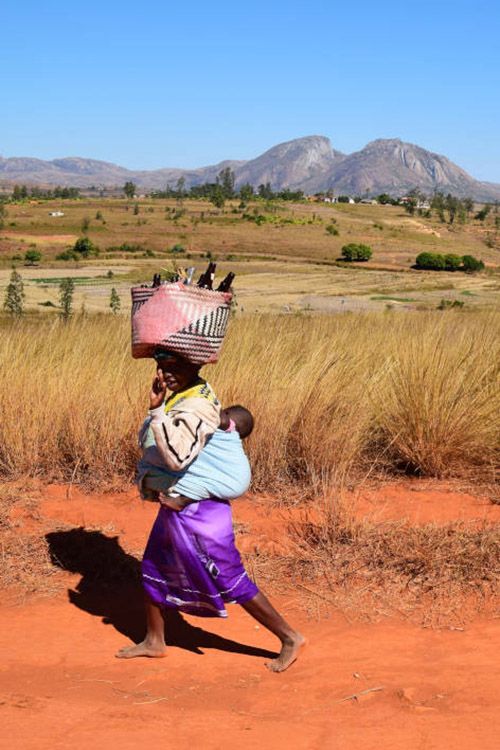
Hosted by a Betsileo family
In the various settlements we passed along the way, our guide knew the inhabitants well. They showed us how they lived and what time-consuming work they had to do to make food, for example. We were able to help sort out the home-grown coffee beans. Actually, every day at the Betsileo is all about taking care of food, working on the land and washing clothes in the river.
At a family, we were allowed to look inside their paltry house. It was a room with a few mattresses in a corner. That was all it was. People live outside and when it gets dark it is time for most people to go to sleep. One of the daughters had had a baby a few weeks earlier and was busy feeding. As a treat, the mother prepared a number of sweet potatoes with a very dry taste for us. Because it is inappropriate to leave anything, we ate it all. It wasn’t easy but we didn’t want to offend our hostess.
After this we walked back along the rice fields and rivers over dusty dirt roads back to Ambalavao. It was a wonderful trip through beautiful landscape. But the daily life of the Betsileo especially left a great impression on us.
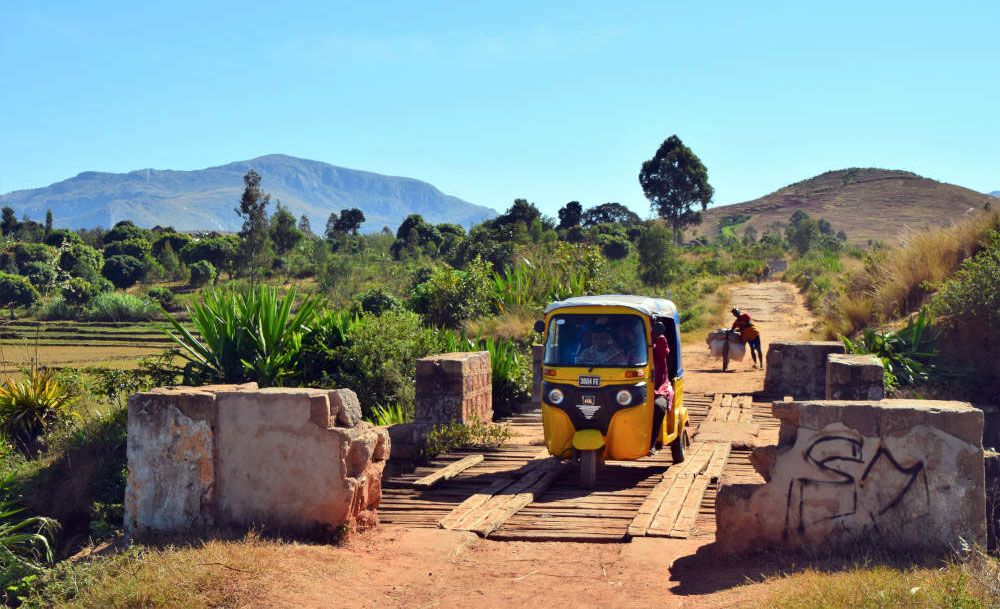
Other activities in Ambalavao
In this region there is a special silkworm. In the north of the village, located on the RN 7, there is a small workshop called Soalandy, where the whole production process of the silk is explained. Nice to see and you can of course buy several silk scarves.
It is also worth visiting the “Fabrique de Papier Antaimoro”. Here you can make beautiful works of art out of a special paper with imprinted flowers on the paper. The entire production process can be seen. The paper factory is near the hotel Aux Bougainvillees in the centre of the village.
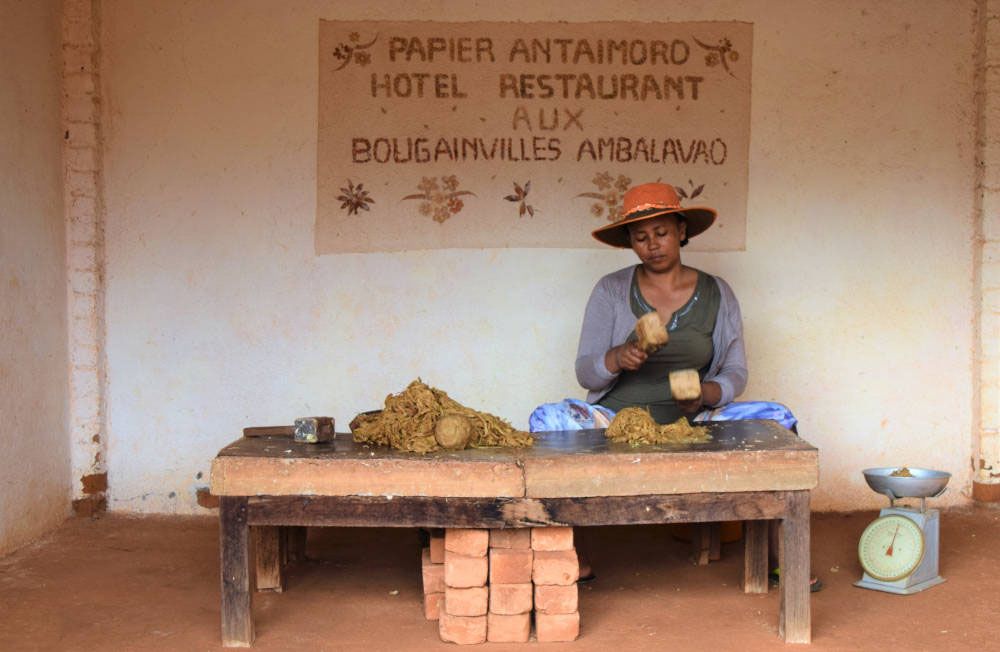
Practical matters
Hotels in Ambalavao
- Residence du Betsileo: Beautiful colonial building with a cosy vibe. Rooms are simple, but neat. Ask for a room at the back because of street noise. The restaurant was great, but the French chef has just sold it to Malagasy people. The question is how will the quality be in a year’s time.
- Aux Bougainvillees: Nice hotel with rooms spread over a quiet park. Simple but comfortable rooms. The hotel is frequently visited by tour operators. Despite the central location it is very quiet. The small paper mill is located on the same complex.
- Betsileo Country Lodge: Since 2017, a Dutch couple has been in charge here. Beautiful, simple bungalows with a fantastic view of the mountains and surroundings. Nice pool. Located about eight kilometres south of Ambalavao. The restaurant is good.
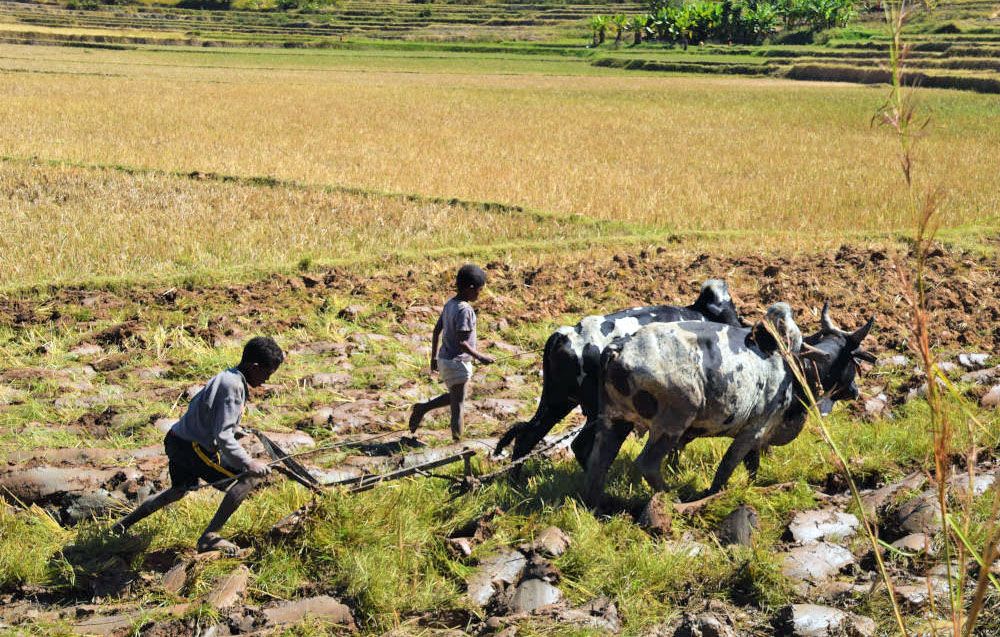
Money matters
Although several sources, including Lonely Planet, indicate that there is no bank in Ambalavao, this is now outdated. When we were there in May 2019, we saw two banks. One of them could only be withdrawn with a Visa credit card. At the other bank it was possible to use Mastercard as well. There was no BFV-SG bank, where debit card transactions with Maestro are possible.
